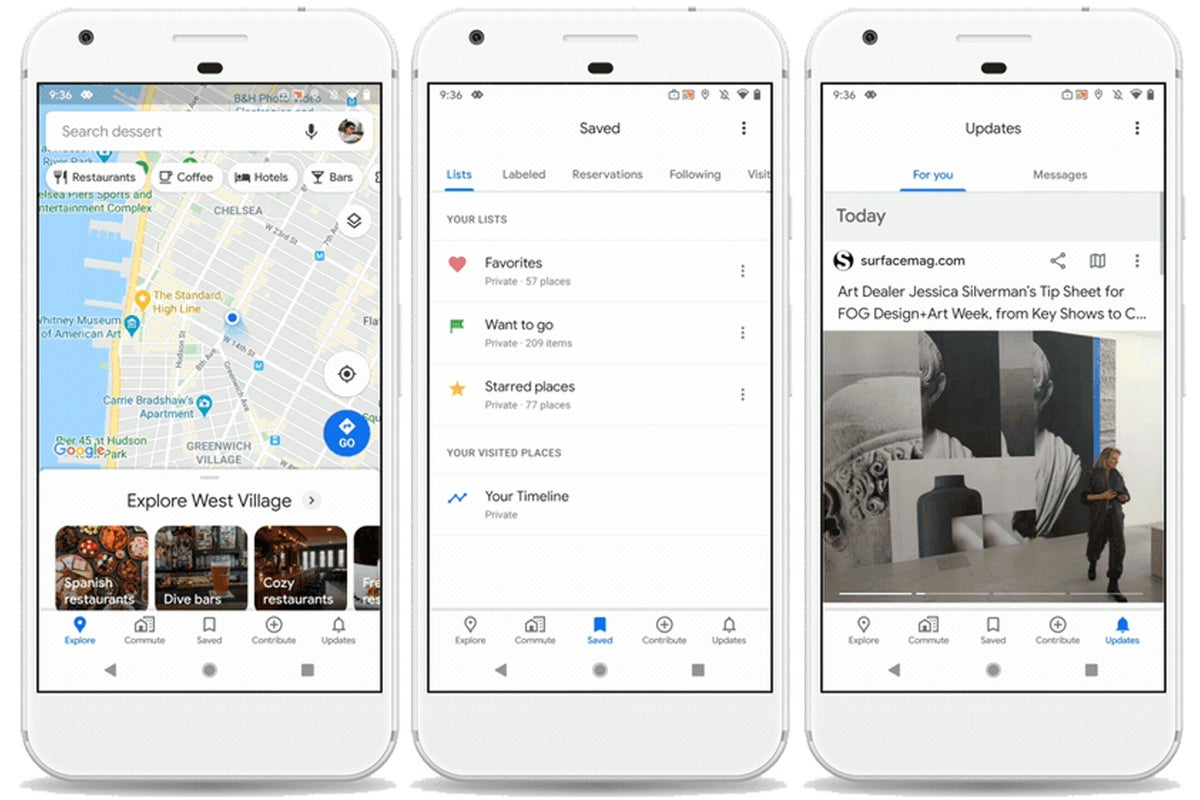It’s been a decade and a half since Google Maps first started telling us where to go, and Google is giving it a proper celebration. So, to mark 15 years of service, Google has refreshed the Google Maps app on Android with a new design, a new icon, and new features.
Google isn’t reinventing the wheel here, but users will notice several changes. The new Google Maps design is rolling out on iOS and Android beginning today.
 Google
Google
New Google Maps tabs provide easier access to contributions and saved places.
The most obvious tweak (other than the icon) is with the navigation menu. Instead of three simple Explore, Commute, and For You tabs, you’ll now find five tabs spanning the bottom of your screen: Explore and Commute as before, along with Saved, Contribute, and Updates. The Saved brings your favorites out of the sidebar, while Contribute makes it quicker to share missing places and reviews. Finally, Updates is basically For You, with a feed of stories, trending nearby spots. It’s also where you’ll be able to send messages to businesses.
Public transportation is also getting some new features to help you plan your trip, including the temperature, accessibility options, security, and even the number of carriages that are available on the subway you will be taking. Google is using crowd-sourcing and user surveys to estimate this information, which will appear alongside public transit routes. Google says the new features will begin rolling out globally in March.
 Google
Google
Google will provide updates on temperature, security, and accessibility inside the subway car you’re riding.
Finally, Google is also beefing up its AR-powered Live View walking directions to show exactly how far a place is from where you’re standing. Additionally, Google says Live View will be receiving updates over the coming months, “starting with better assistance whenever you’re searching for a place.”
Along with the new features, Google Maps chief Jen Fitzpatrick has taken a look at the first 15 years of the service and what a “gargantuan task” it is. Thanks to AI and machine learning, Fitzpatrick says Google has “mapped as many buildings in the last year as we did in the previous 10,” and is using the technology to better identify handwritten building numbers in areas where formal street signs are uncommon. In Lagos, Nigeria, she says machine learning has helped Google Maps add 20,000 street names, 50,000 addresses, and 100,000 new businesses.